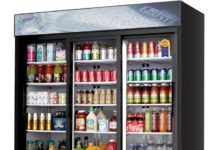The superannuation super fund is the largest fund in Australia that people use to accumulate funds to provide themselves with income when they retire. It’s highly encouraged by the government and is supported with tax benefits. The government has a list of minimum standards for contributions for employees as well for managing the superannuation funds. On top of that, employees are supposed to contribute funds to their employees’ wages and salaries.

If someone wants to set up a self-managed super fund, they need to meet the sole purpose test. This test is designed to ensure that the self-managed super fund is maintained for one purpose only – to provide benefits to it’s members when they retire, or their dependents in case of death before retirement. This test is divided into ancillary and core purposes. A fund must maintain at least one ancillary purpose or at least one core purpose.
Core Purposes
- Paying benefits when a member retires from a gainful employment;
- Paying benefits when a member has reached a prescribed age;
- Paying benefits when a member dies to a member’s dependent or legal representative.
Ancillary Purposes
- A member being fired from an employer who has made contributions to the fund to that member;
- Cessation of employment due to ill mental or physical health;
- Death of a member after retirement where benefits are paid to member’s dependents or legal representative;
- Death of a member after attaining a prescribed age where the benefits are paid to the member’s dependents or legal representative;
- Other purposes approved in writing by the Australian Prudential Regulation Authority.
ATO SMSF statistics are released four times a year. Recent statistics show that the fund is gradually growing, with positive returns on assets and with increased funds and member count. ATO SMSF statistics of the self-managed super funds return data shows that real property assets, residential and non-residential make up for the majority of the overall value of assets that have been acquired under these arrangements. In the last quarter of 2015, self-managed super funds held under LRBAs are estimated at around $18 billion, which increased from $15.6 billion from June 2015. This represents approximately 3% of the total SMSF assets of $576 billion.
If you are hesitant about whether you should invest into a self-managed super fund, you shouldn’t be anymore. Hire someone who fully understands SMSFs and let him consult you to ensure you make the right moves towards acquiring your own superannuation fund.













